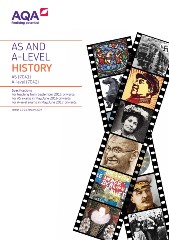2L Italy and Fascism, c1900–1945
This option provides for the study in depth of a period of Italian history during which democracy gave way to Fascism. It requires an exploration of concepts such as liberalism, extremism, Fascism and authority. It also encourages students to reflect on the reasons for political change, the interaction of economic and governmental developments and the factors which promote and sustain dictatorship.
Part one: the crisis of Liberal Italy and the Rise of Mussolini, c1900–1926
The Crisis of Liberal Italy, c1900–1915
- The political, economic and social condition of Italy c1900: the legacy of unification; divisions between North and South; the conflict between Church and State; class divisions
- The political system and Giolittianism: the role of the monarchy; the dominance of government by the liberal oligarchy; anticlericalism; the role of Giolitti
- Challenges to the ruling elites: industrialisation and social change; the rise of socialism and new political movements
- Italian foreign policies: the Triple Alliance; colonial ambitions in Abyssinia and Libya; Italy’s decision to enter the war in 1915
The collapse of Liberal Italy and Mussolini’s Rise to Power, 1915–1922
- Italy’s war effort: aims and expectations; military campaigns; Caporetto; the impact of war and defeat on the Home Front
- Italy and the ‘Mutilated Victory’: reactions within Italy to the post-war peace settlement and treaties; the seizure of Fiume by d’Annunzio
- The post-war economic crisis and social unrest: unemployment and inflation; government instability; the rise of the PSI; the Popolari and the Fascist Party
- Political breakdown and the rise of extremism: strikes; political violence and the collapse of parliamentary government
Mussolini and the establishment of Fascist Italy, 1922–1926
- The appointment of Mussolini as prime minister: Mussolini’s tactics and the March on Rome; the role of the King; compromises by the ruling elites
- The Fascist movement: the ideology of Fascist revolution; the different political factions within the Fascist Party; Fascist propaganda; Mussolini as leader
- Mussolini’s consolidation of power: compromises with the elites; the use of terror and violence; constitutional change and moves towards a one-party state; exploitation of the popularity of Fascist economic and foreign policy successes
- The Fascist state by 1926: the extent of Mussolini’s political control; the extent of popular support for Mussolini’s regime; the extent of opposition and dissent
Part two: Fascist Italy, 1926–1945 (A-level only)
Fascist society, 1926–1940 (A-level only)
- Propaganda and the cult of Il Duce: control of the media; education as propaganda; the role of Fascist organisations
- The police state: the machinery of Fascist repression; methods to deal with opposition and dissent; the race laws of 1938
- Fascist economic policies: the establishment and implementation of the Corporate State; Fascist economic policies in response to the 1930s Depression; living standards; the impact on the economy of Fascist military expansion
- Fascist society: relations between the Fascist regime and the Church; the impact of Fascist organisations on women, youth, peasants and workers; the extent of ‘Fascistisation’ of society by 1940
Fascist foreign policies, 1926–1940 (A-level only)
- Mussolini’s foreign policy ambitions: the restoration of prestige; the Mediterranean and ‘Mare Nostrum’; empire in Africa
- Mussolini the statesman: relations with Britain and France; Italian influence in Austria; the Stresa Front
- Mussolini and Empire: the invasion of Abyssinia and the conduct of the war; the impact of the war on Mussolini’s popularity and prestige at home and abroad
- The slide towards war: the Spanish Civil War; changing relations with Hitler’s Germany; the Pact of Steel; the invasion of Albania; the neutrality of Italy in 1939 and the extent of Italy’s military preparedness by 1940
Fascist Italy and war, 1940–1945 (A-level only)
- The decision to enter the war: Mussolini’s war aims; Italy’s contribution to the conquest of France; the implications for Italy of the continuation of the war
- Italy’s war effort: military campaigns; the impact of the war on the economy and the Italian people; the relationship with Nazi Germany
- The fall of Mussolini in 1943: Allied invasion of Sicily and the crisis of the Fascist regime; the overthrow of Mussolini by the Fascist Grand Council and the King; the ‘Forty Five Days’ and the continuation of war and civil war in Italy
- The final collapse of Fascism: the restoration of Mussolini; the Fascist policies of the Salo Republic; the intensification of civil war and the role of the partisans; the end of German occupation; the death and legacy of Mussolini
